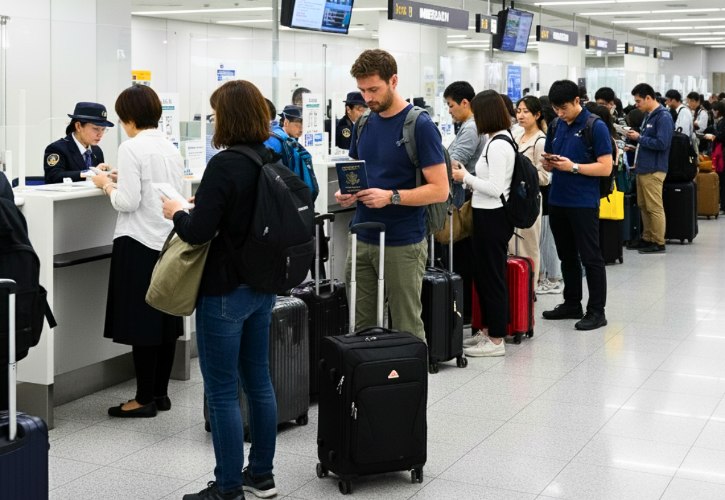
Getting ready for Japan? Trust me, a little preparation now will save you hours of stress later.
I’ve seen too many travelers scramble at Japan’s airports because they skipped these crucial steps.
Here’s your roadmap to arriving in Japan feeling confident and prepared, not overwhelmed and jet-lagged. 😊
1. Register on the Visit Japan Web
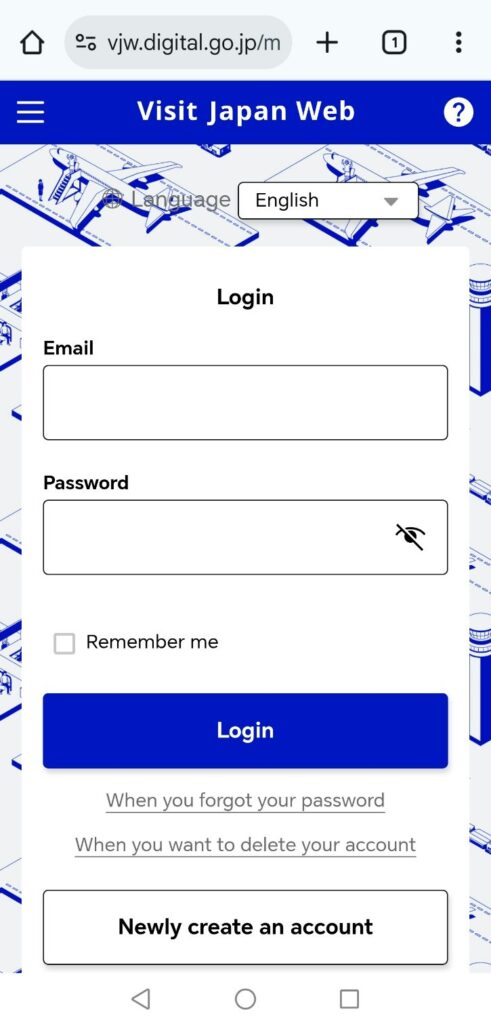
a. Why this step matters
Visit Japan Web is your digital fast pass through immigration and customs.
While you can still fill out paper forms on the plane, doing this online beforehand means you’ll breeze through the airport with just a QR code scan.
Think of it as pre-checking into Japan before you even leave home.
b. What to do
Create your account at Visit Japan Web using your email address. The verification code comes quickly, so check your inbox right away.
Here’s the simple process:
- Register your details: Scan your passport with your phone or type the info manually
- Add your trip: Enter your arrival date, flight number (numbers only, no airline code), and first night’s accommodation
- Complete declarations: Fill out the immigration and customs forms online
- Save your QR code: Screenshot it immediately, you’ll need this at the airport
For families traveling together: You can manage everyone’s travel details under one account. Just add each family member’s passport information after creating your account. If anyone has a different travel plan, they should register separately.
For detailed steps on registration, you can refer to this guide. Complete everything at least 10 days before departure.
c. Pro tip
Screenshot that QR code and save it offline. Airport WiFi can be spotty when you’re exhausted from a long flight. Having it ready in your phone’s photo gallery means you won’t be that person frantically trying to connect while everyone waits behind you.
2. Book Your Accommodation Early
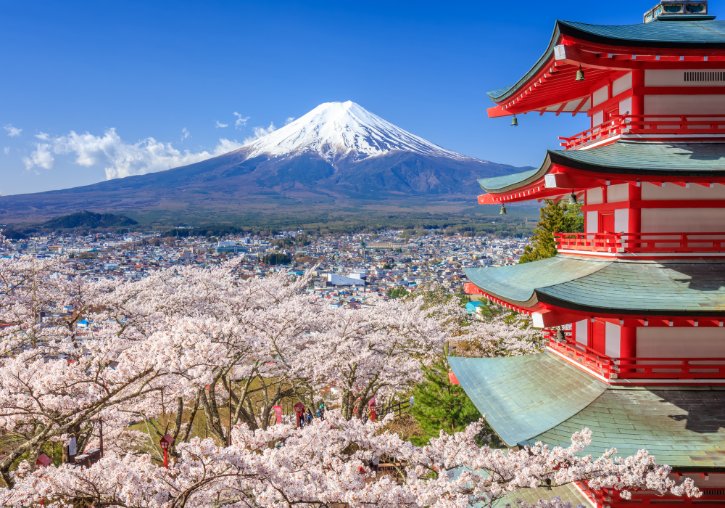
a. Why this step matters
Japan’s hotels fill up shockingly fast, especially during cherry blossom season when prices can double overnight.
The best locations near train stations go first, and you really want to be near a station.
Book at least 6 months in advance for peace of mind and better selection.
b. What to do
Start your search early, especially if you’re traveling during:
- Cherry blossom season (late March-April)
- Golden Week (late April-early May)
- Autumn leaves (October-November)
- New Year holidays
Always prioritize location over luxury. A basic hotel within 5-10 minutes of a major train station beats a fancy one that’s a 30-minute walk away.
Compare prices on multiple platforms like Booking.com and Agoda to find the best deals.
c. Mistake to avoid
Here’s what most travelers forget: Japanese hotel rooms are compact. If you need space or you’re traveling with family, book those larger rooms now. They’re limited and disappear fast.
Pro move: Book refundable rates early to lock in your spot, then keep checking for better deals.
Read More:
- 5 Best Times to Visit Tokyo (and Months to Avoid)
- 10 Best Hotels in Tokyo for Easy Travel
- 10 Best Hotels in Osaka and Kyoto for Tourists
3. Get Travel Insurance Coverage
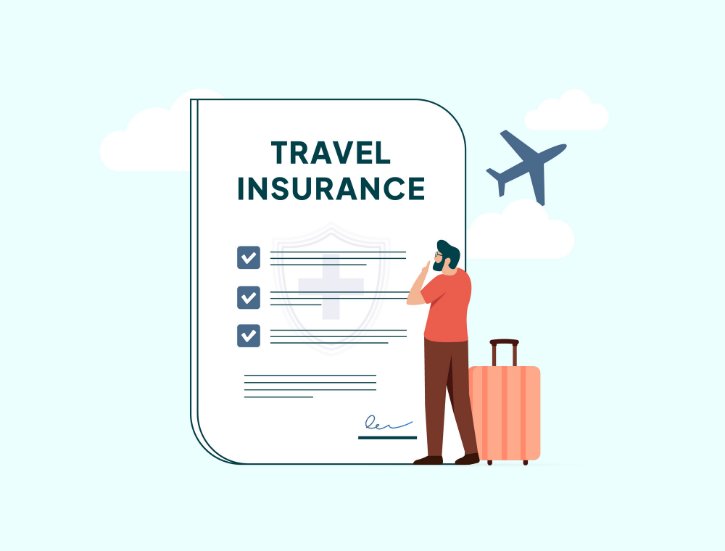
a. Why this step matters
Japanese healthcare is excellent but expensive for visitors. A simple doctor visit costs ¥10,000+ ($66+), and hospitals often demand upfront payment or proof of insurance before treating you.
Without insurance, you could face bills in the millions of yen for serious issues. Plus, good insurance provides 24/7 multilingual support when you’re stressed and confused.
b. What to do
Get a policy with at least ¥20 million ($131,000) in medical coverage. Here’s what it must include:
- Emergency medical treatment and evacuation
- Coverage for COVID-19 (standard now in most policies)
- Natural disaster coverage (Japan has earthquakes and typhoons)
- “Cashless” hospital payment if possible
Save your insurer’s emergency number in your phone. Write it down on paper too, just in case.
Check if your credit card includes travel insurance, but verify the coverage limits. Most credit card insurance won’t be enough for Japan’s medical costs.
c. Mistake to avoid
Never assume your home health insurance covers you abroad. It probably doesn’t. And that “free” credit card travel insurance? The coverage limits are usually too low for Japan’s medical costs.
4. Prepare Any Necessary Medication
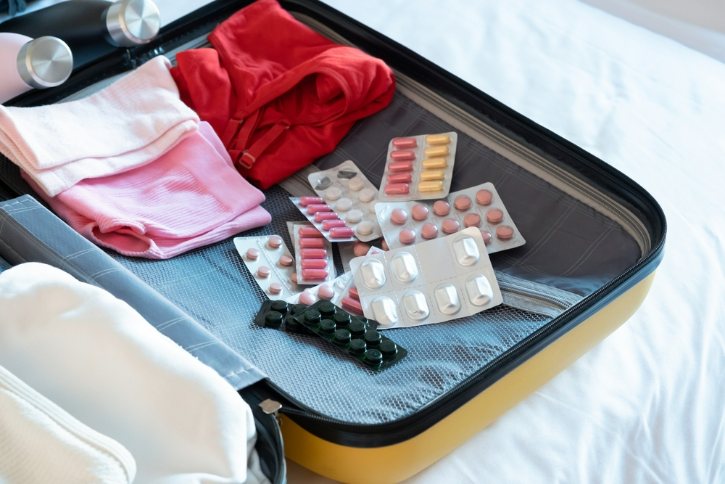
a. Why this step matters
English-speaking clinics in Japan often book out days in advance. If you run out of medication or need medical help, getting an appointment can be challenging, even in major cities.
Having backup medicines and your regular prescriptions ensures you won’t be stuck searching for a doctor when you should be enjoying your trip.
b. What to do
Bring enough medication plus extras:
- Pack your regular prescriptions with extra supply in case of travel delays
- Include a basic medicine kit: pain relievers, stomach remedies, allergy pills, cold medicine
- Carry a doctor’s letter explaining your prescriptions
Important medication rules:
- Prescription meds: Up to 1-month supply allowed without special permission
- Over-the-counter meds: Up to 2-month supply allowed
- Some substances like ADHD medications and strong decongestants require special permits
If you need more than a 1-month supply or any controlled substances, apply for a Yunyu Kakunin-sho (Import of Medication Certification) at least a month before travel.
Pack smart:
- Keep all meds in original packaging
- Pack everything in your carry-on, never checked luggage
- Have copies of all prescriptions
c. Pro tip
Create a medication cheat sheet listing the generic names of your drugs. Japanese pharmacists can help if they know the active ingredients, even if they don’t recognize your brand names.
Consider bringing common remedies you trust from home. While Japanese pharmacies are excellent, finding what you need when you’re feeling unwell and dealing with language barriers isn’t ideal.
Read More: 10 Carry-On Rules in Japan
5. Download Helpful Travel Apps
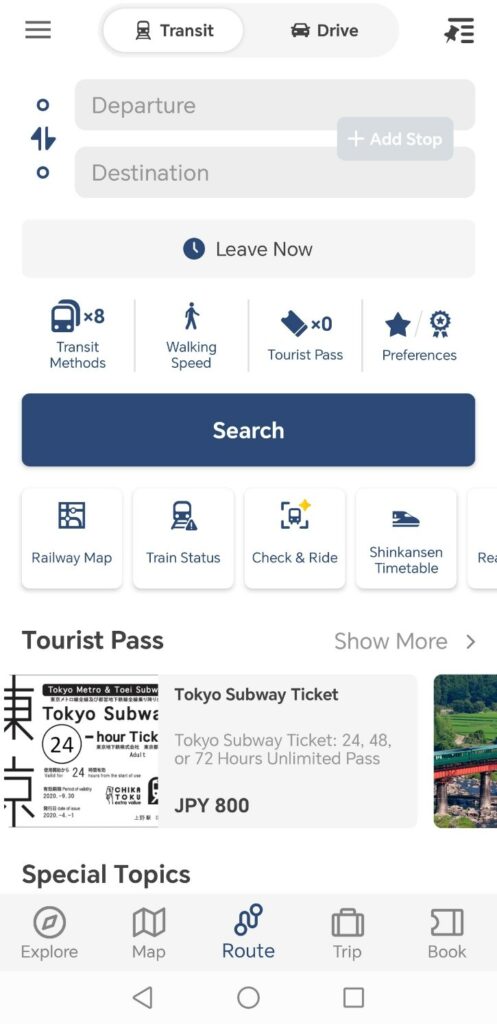
a. Why this step matters
Navigating Japan without the right apps is like trying to solve a puzzle blindfolded. These tools handle translation, train navigation, and finding your way around, turning potential disasters into minor hiccups.
Set them up now while you have time to learn them.
b. What to do
Essential apps to download:
Google Maps
- Shows platform numbers and train times
- Walking directions are spot-on
Japan Travel by NAVITIME
- Filters routes covered by JR Pass
- Shows exact platform numbers
- Tells you which train car to board for quick transfers
Google Translate
- Camera feature translates menus instantly
- Conversation mode helps at shops
- Voice translation for asking directions
Uber (for major cities)
- Functions as a taxi-hailing app in Japan
- English interface for easy booking
- Cashless payment option
c. Pro tip
Use Google Maps and NAVITIME together. Google Maps gives you the big picture, NAVITIME tells you exactly which train car to board for the fastest transfer.
Before you fly, open each app and familiarize yourself with the basics. You don’t want to be figuring this out in Shinjuku Station with thousands of people rushing past.
6. Exchange or Withdraw Japanese Yen (Cash)
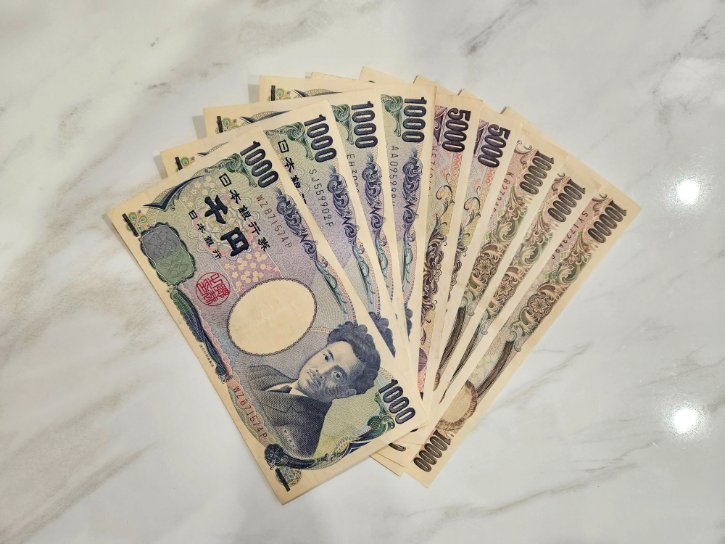
a. Why this step matters
Japan runs on cash. Credit cards work in department stores and chain restaurants, but that amazing ramen shop? Cash only. Temple entrance fees? Cash. Local markets? Cash.
Running out of yen at night when ATMs charge extra fees (or close entirely) is a nightmare you can easily avoid.
b. What to do
Prepare around ¥50,000 in cash for your trip to cover meals, transport, and small expenses.
Use 7-Eleven ATMs in Japan for the rest:
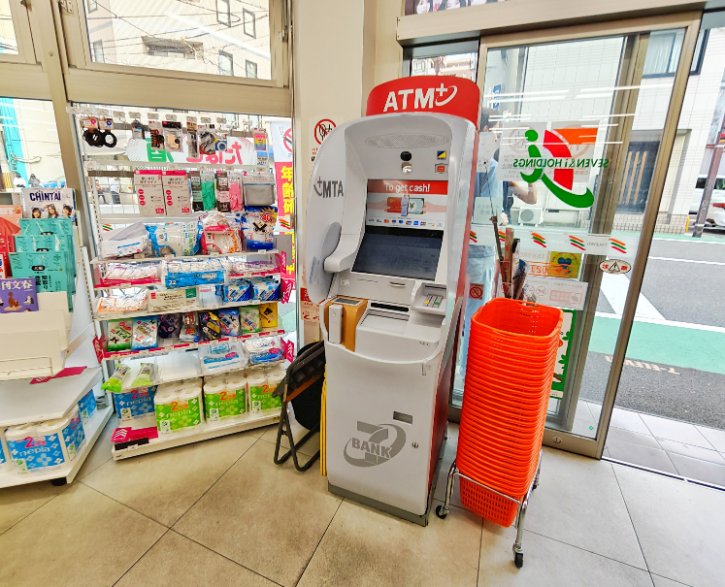
- They’re everywhere and open 24/7
- English menu available
- Accept almost all foreign cards
- Better exchange rates than airport counters
Withdrawal tips:
- Maximum per transaction: ¥100,000
- Choose to be charged in Japanese Yen, never your home currency
- Withdraw enough for several days to minimize fees
c. Mistake to avoid
Always decline Dynamic Currency Conversion. When the ATM asks if you want to be charged in your home currency, say no. Choose yen. The conversion rate they offer is terrible, often 4% worse than your bank’s rate.
Also, inform your bank you’re traveling to Japan. Nothing ruins dinner like a declined card.
7. Notify Your Bank About Credit Card Use in Japan
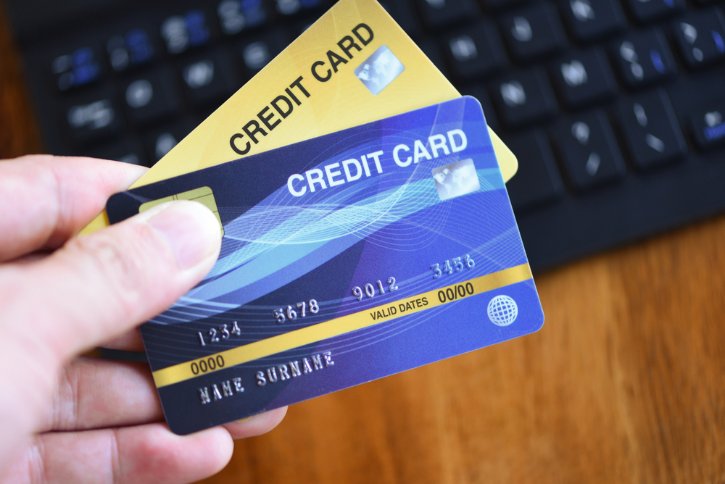
a. Why this step matters
Your bank’s fraud detection will absolutely flag sudden charges from Tokyo if they don’t know you’re there. Cards get frozen fast, leaving you stranded.
Plus, you need working cards for more than just shopping.
The Tokyo Disney Resort app requires credit cards for Disney Premier Access (skip-the-line service) and Mobile Order for food, which saves significant waiting time in the parks.
Read More: 10 Big Mistakes to Avoid at Tokyo Disneyland
b. What to do
Contact your bank to set a travel notice. Include Japan and any layover countries.
While you’re at it:
- Check foreign transaction fees (usually 3%)
- Confirm your daily ATM withdrawal limit
- Know your credit card PIN (Japan uses chip-and-PIN)
- Verify your cards work with mobile payments
Consider getting a Wise card before your trip. It offers:
- Real exchange rates with minimal fees
- Works seamlessly at Japanese ATMs
- No foreign transaction fees
- Easy to load and manage through the app
Bring at least two different cards (ideally one Visa, one Mastercard). Keep them in separate places.
c. Pro tip
Update your bank’s contact method to email instead of SMS. If you’re using a Japanese SIM card, you won’t receive text message security codes from your home bank.
8. Pack Power Adapters and a Power Bank
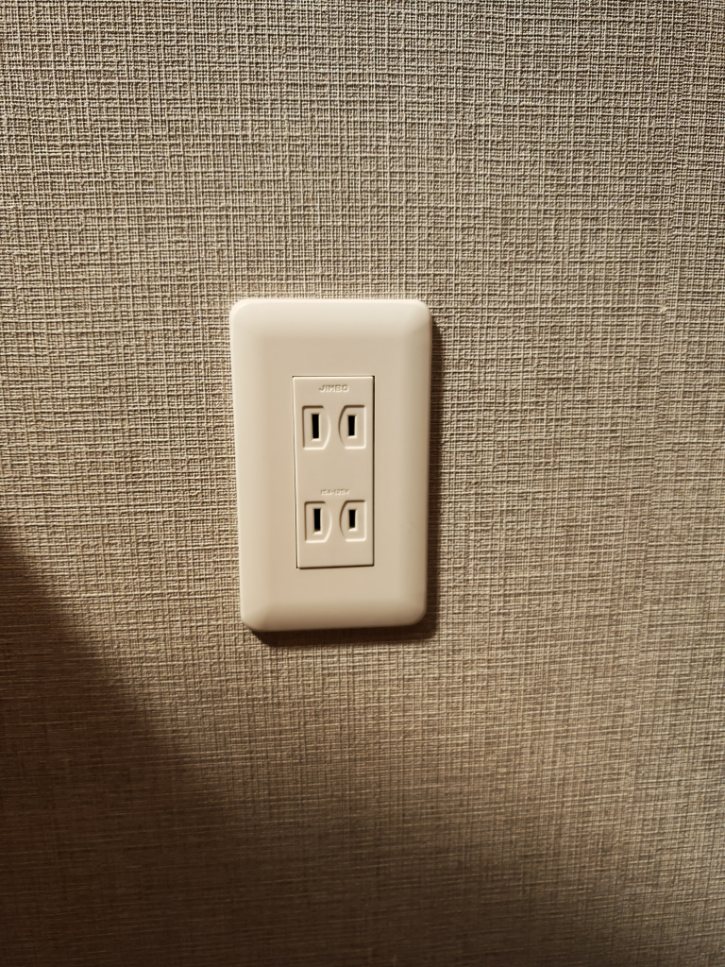
a. Why this step matters
Japan uses 100V electricity with Type A plugs (two flat pins). Without the right adapter, your devices become expensive paperweights.
b. What to do
Check your devices:
- Look for “INPUT: 100-240V” on chargers (most modern devices have this)
- If yes, you just need a plug adapter
- If no, leave it home or buy a travel version
Pack these power essentials:
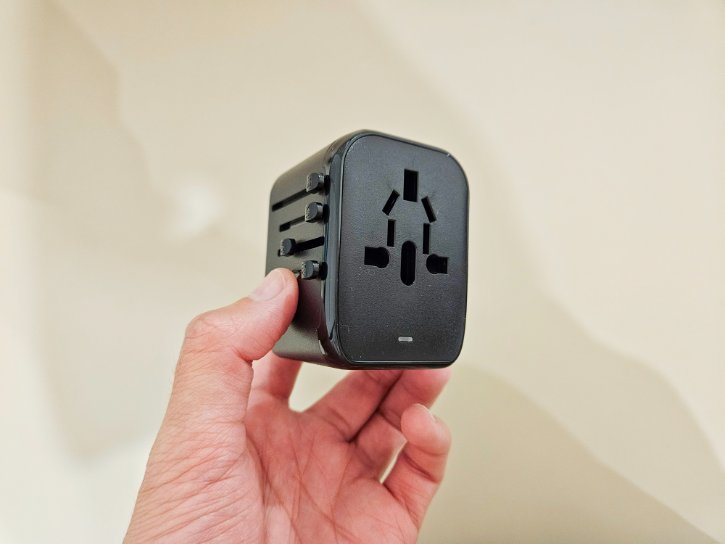
- Universal travel adapter (supports Type A plug)
- Power bank (10,000-20,000 mAh)
- Travel power strip with USB ports (game-changer for limited outlets)
- All necessary charging cables
Remember: power banks must go in carry-on luggage, never checked bags.
c. Pro tip
A small power strip with USB ports solves everything. One adapter, multiple devices charged overnight. It weighs almost nothing and saves you from crawling behind beds hunting for outlets.
Also, Japanese convenience stores sell emergency phone chargers if you’re desperate, but they’re overpriced.
9. Reserve Popular Attractions in Advance

a. Why this step matters
Japan’s must-see attractions don’t do walk-ins anymore. The Ghibli Museum? Online tickets only, sold out in minutes. Tokyo Disney? Can’t even buy tickets at the gate. Universal Studios? Same story.
Show up without reservations and you’ll be watching other people’s Instagram stories instead of making your own.
b. What to do
Book these attractions well in advance:
Ghibli Museum
- Extremely limited tickets
- No on-site sales ever
- Books out weeks or months ahead
Tokyo Disney Resort
- Must buy online or through app
- Weekends and holidays sell out fast
- Cannot purchase at the gate
Universal Studios Japan
- Express Passes for Nintendo World sell out weeks early
- No gate sales
- Book through official site or Klook
Shibuya Sky
- One of Tokyo’s best observation decks
- Book online for cheaper tickets and guaranteed entry
- Sunset slots book out days in advance
c. Pro tip
Set phone reminders to book these attractions as soon as you confirm your travel dates. For the Ghibli Museum, be prepared to be flexible with your dates as tickets are extremely competitive.
Don’t confuse Ghibli Museum (Tokyo) with Ghibli Park (Nagoya). They’re completely different places with separate ticketing systems.
10. Arrange Luggage Delivery Service (if needed)
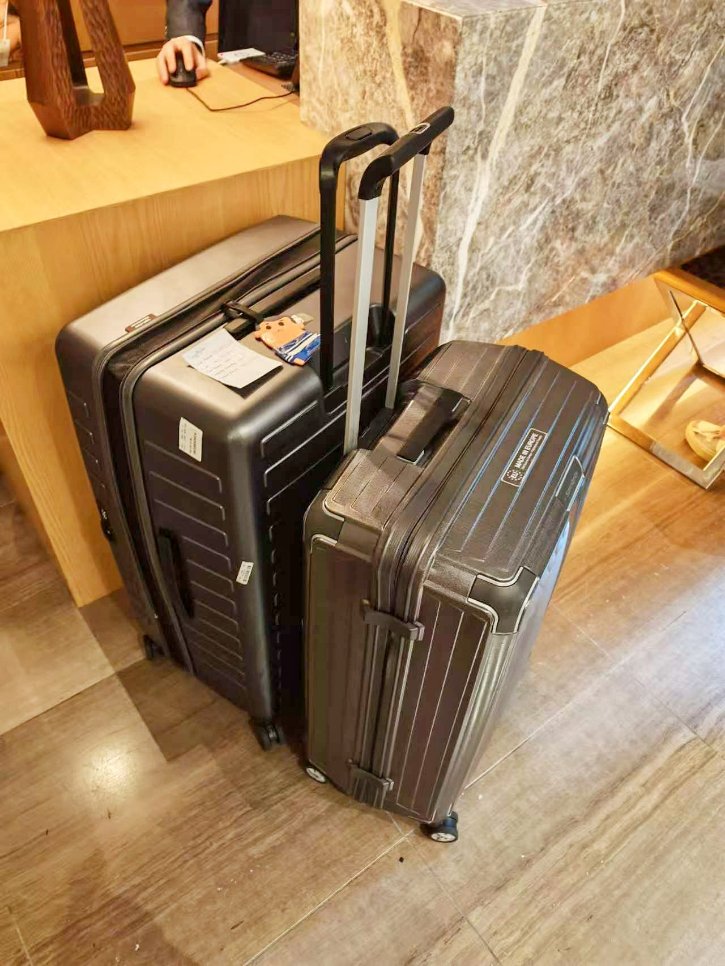
a. Why this step matters
Dragging heavy suitcases through crowded train stations and up endless stairs is exhausting.
Japan’s takkyubin (luggage delivery) service lets you send bags ahead to your next hotel.
b. What to do
Where to send luggage:
- Airport counters (send straight to your hotel upon arrival)
- Hotel front desks (they’ll arrange everything)
Major service providers:
- Yamato Transport (Kuroneko) – most widespread
- JAL ABC – specializes in airport services
- LuggAgent – I personally used this in Osaka and Kyoto. Their service is exceptional, keeping you updated on luggage status through email and WhatsApp throughout the delivery process. Very convenient and professional.
Delivery times:
- Same-day within cities: Hotel-to-hotel transfers within Tokyo deliver the same day if dropped off by morning. Same applies for Osaka-Kyoto routes, which are close enough for same-day service
- Standard city-to-city: For longer distances like Tokyo to Osaka/Kyoto, expect next-day delivery.
For hotel-to-hotel within Tokyo or Osaka-Kyoto area: Drop off at your hotel desk by 10-11 AM, and your luggage arrives at your next hotel by evening. Perfect for when you’re changing hotels but want to sightsee during the day.
BONUS TIP: Save Emergency Contacts
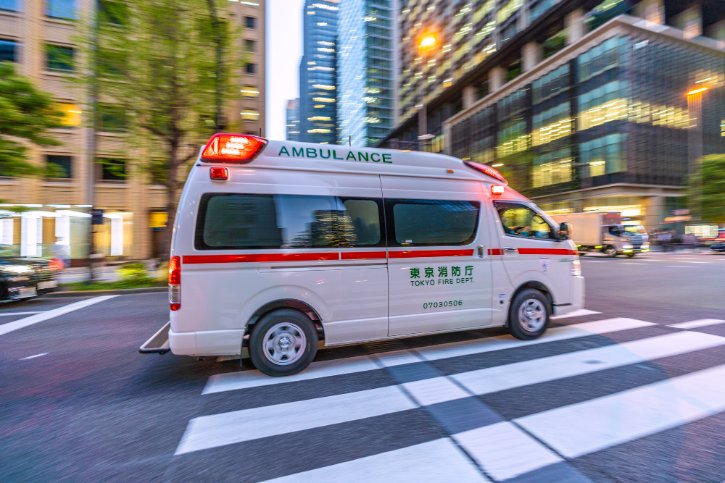
a. Why this step matters
When something goes wrong, fumbling for phone numbers wastes precious time.
Having emergency contacts saved and accessible can literally save your trip, or worse, your life.
b. What to do
Save these numbers NOW:
- Police: 110
- Ambulance: 119
- Japan Visitor Hotline: 050-3816-2787 (24/7 English support)
- Your embassy’s number
- Your travel insurance emergency line
Create two backups:
- Save in your phone’s contacts
- Write on paper in your wallet
Include your hotel’s name, address (in Japanese), and phone number.
c. Pro tip
If you need an ambulance, say “Kyuu-kyuu desu” (emergency). For police, just say “110” and they’ll understand.
The Japan Visitor Hotline is incredible. They’ll translate at hospitals, help during disasters, or just answer tourist questions. Save that number.
Related Posts
Photo Credit:
Photos by PIXTA

